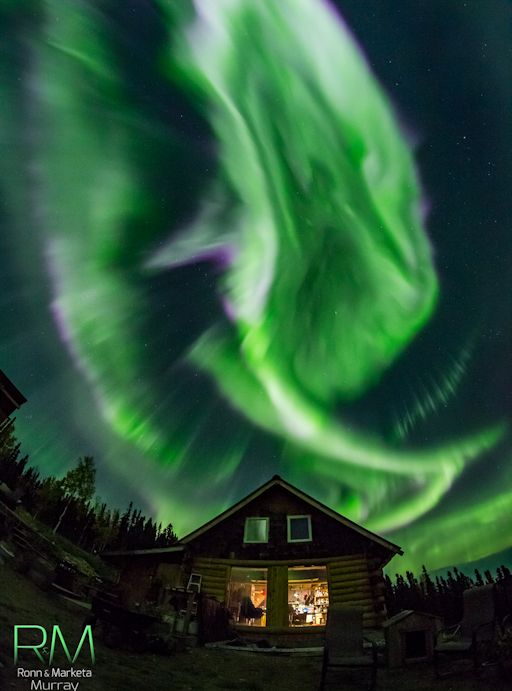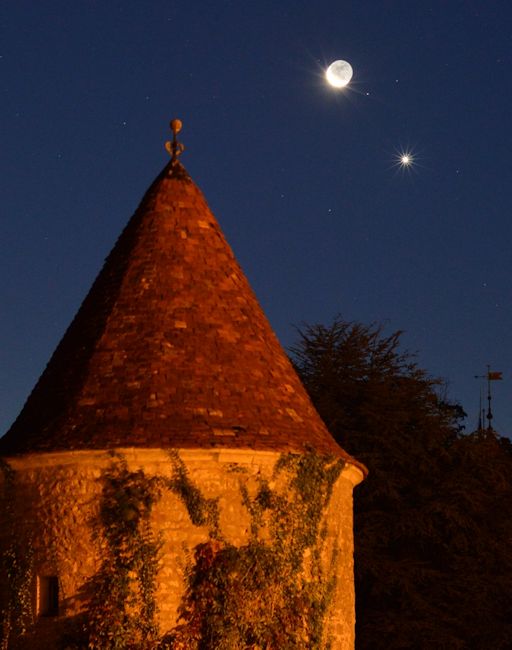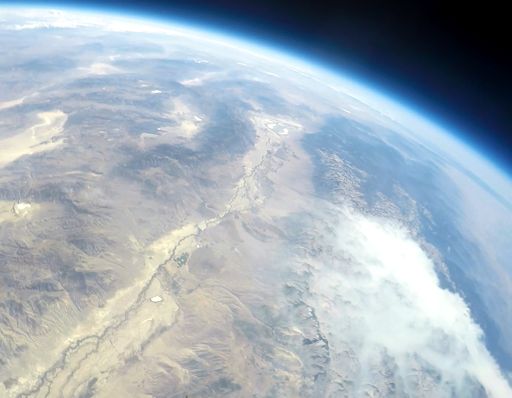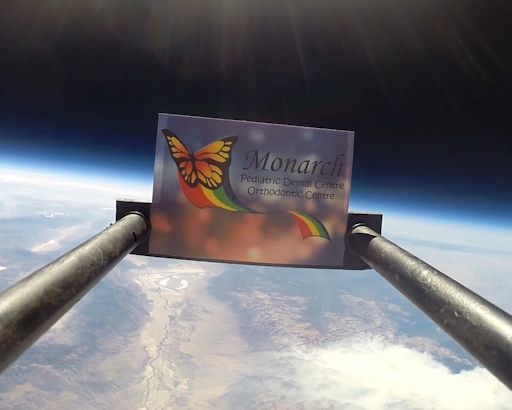Marianne's Heaven On Earth Aurora Chaser Tours Chasethelighttours.co.uk invites you to join them in their quest to find and photograph the Aurora Borealis. Experience the winter wonderland in the Tromsø Area. | | |
SEPT 11TH GEOMAGNETIC STORM: During the early hours of Sept. 11th, a high-speed solar wind stream hit Earth's magnetic field. The impact sparked a strong (Kp=7) geomagnetic storm and Northern Lights in the USA as far south as Wisconsin and Washington State. In Alaska, "the entire sky was moving like sea waves in colors of green and purple," reports aurora tour guide Marketa Murray, who took this picture outside Fairbanks:

"This was the most beautiful night in a long time," she says. "Our guests were crying and couldn't catch their breath."
More breathtaking auroras could appear tonight. NOAA forecasters estimate a 55% chance of geomagnetic storms on Sept. 11-12 as the solar wind continues to blow. Aurora alerts: text or voice
Realtime Aurora Photo Gallery
THE MORNING PLANET SHOW: Planets are gathering in the morning sky. Venus and Jupiter have recently emerged as morning "stars," rising in the east ahead of the sun, joining Mars in an array of lights that lets early risers view 1/3rd of the solar system at a glance. The display will continue--and improve--as autumn unfolds. This was the view on Sept. 10th:

Jean-Baptiste Feldmann took the picture from Nuits-Saint-Georges, France, just before sunrise on Thursday. At the time, the crescent Moon was passing by Venus en route to Jupiter, adding its luster to that of the planets. "It was a beautiful view," says Feldmann.
More scenes like this are in the offing. On Oct. 8th the crescent Moon will have another close encounter with Venus (sky map), followed one day later by a near miss of Jupiter and Mars (sky map). Every morning thereafter, the planets will converge until Oct. 24th - Oct. 29th when they fit within a circle only 5o wide (sky maps: #1, #2, #3, #4, #5, #6). Typical binoculars can see a patch of sky about 6o or 7o degrees wide. So when the triangle of planets shrinks to 5o, they will fit together inside a binocular field of view. Imagine looking through the eyepiece and seeing three planets--all at once.
By the time October comes to an end, the planetary triangle will start breaking apart. But there are still two dates of special interest: Nov. 6th and 7th (sky maps: #1, #2). On those increasingly wintry mornings, the crescent Moon will swoop in among the dispersing planets for a loose but beautiful conjunction.
Look east before sunrise. There's a lot to see.
Realtime Space Weather Photo Gallery
WILDFIRE AT THE EDGE OF SPACE: On Sept. 6th, Spaceweather.com and the students of Earth to Sky Calculus launched a space weather balloon equipped with radiation sensors. It was a regular flight, part of their weekly program to monitor cosmic rays in the atmosphere. En route to the stratosphere, cameras on the payload looked back and observed an enormous wildfire. This is the view from 109,600 feet:

The massive plume of smoke, pictured right, is coming from the Rough Fire, an 86,000 acre inferno raging through King's Canyon National Park in central California. Smoke from the fire is choking much of the Sierra Nevada mountain range where our space weather balloons are launched.
We've been using balloons and Geiger tubes to monitor cosmic radiation for the past two years. This particular balloon flight attempted something new: using microbes to measure radiation. Five different strains of yeast were flown alongside conventional radiation sensors to calibrate the microbes' response to cosmic rays. This kind of experiment could lead to new and improved techniques for measuring the biological effectiveness of high-altitude radiation.
HEY THANKS! The students of Earth to Sky Calculus wish to thank Dr. Mark Casafrancisco, whose generous donation of $500 made this research flight possible. Here is his business card floating in the stratosphere:

"Sending my business card to space not only allows me to support your student research program, but also shows how proud I am of our out-of-this-world family of stellar staff and pediatric dentists at Monarch Pediatric Dental Centre in Vancouver, BC, Canada!" he says.
Readers, if you would like to sponsor a research flight and see your photo at the edge of space, please contact Dr. Tony Phillips to make arrangements.
Realtime Sprite Photo Gallery
Realtime NLC Photo Gallery
Every night, a network of NASA all-sky cameras scans the skies above the United States for meteoritic fireballs. Automated software maintained by NASA's Meteoroid Environment Office calculates their orbits, velocity, penetration depth in Earth's atmosphere and many other characteristics. Daily results are presented here on Spaceweather.com.
On Sep. 11, 2015, the network reported 25 fireballs.
(20 sporadics, 5 September epsilon Perseids)

In this diagram of the inner solar system, all of the fireball orbits intersect at a single point--Earth. The orbits are color-coded by velocity, from slow (red) to fast (blue). [Larger image] [movies]
Potentially Hazardous Asteroids (
PHAs) are space rocks larger than approximately 100m that can come closer to Earth than 0.05 AU. None of the known PHAs is on a collision course with our planet, although astronomers are finding
new ones all the time.
On September 11, 2015 there were potentially hazardous asteroids.
Notes: LD means "Lunar Distance." 1 LD = 384,401 km, the distance between Earth and the Moon. 1 LD also equals 0.00256 AU. MAG is the visual magnitude of the asteroid on the date of closest approach. | | The official U.S. government space weather bureau |
| | The first place to look for information about sundogs, pillars, rainbows and related phenomena. |
| | Researchers call it a "Hubble for the sun." SDO is the most advanced solar observatory ever. |
| | 3D views of the sun from NASA's Solar and Terrestrial Relations Observatory |
| | Realtime and archival images of the Sun from SOHO. |
| | from the NOAA Space Environment Center |
| | the underlying science of space weather |
| | Web-based high school science course with free enrollment |

